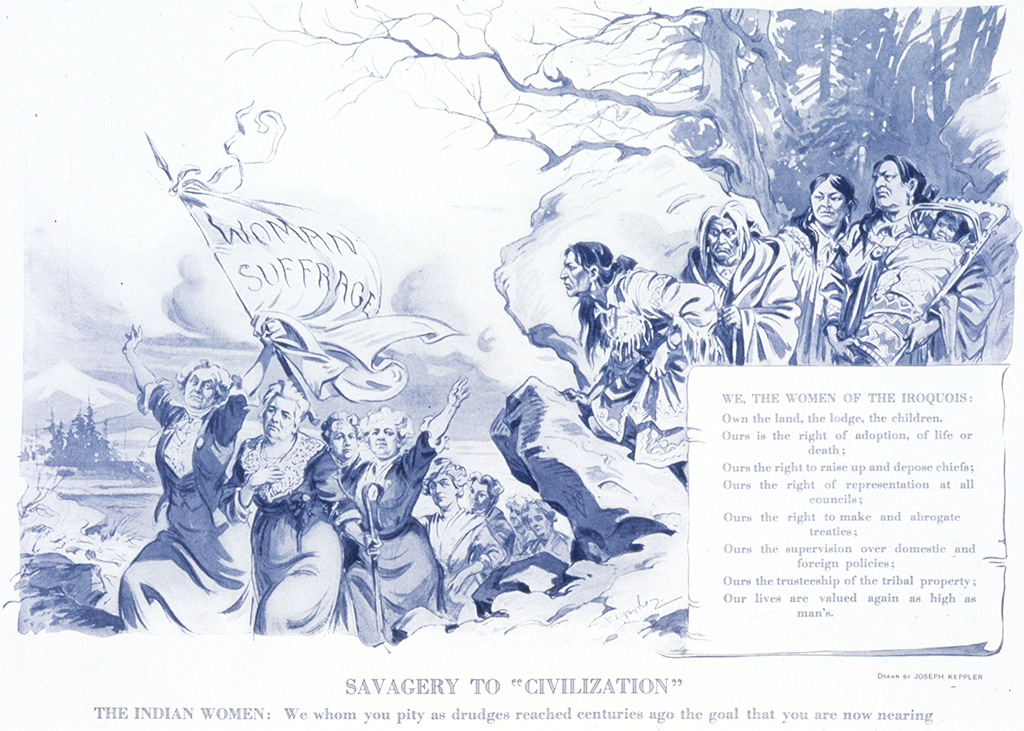 Savagery to "Civilization", by Joseph Keppler, 1914. “We whom you pity as drudges reached centuries ago the goal that you are now nearing.” Image courtesy Library of Congress.
Savagery to "Civilization", by Joseph Keppler, 1914. “We whom you pity as drudges reached centuries ago the goal that you are now nearing.” Image courtesy Library of Congress.
1830s | Iroquois Women Exert a Profound Influence on Suffragists Vision of Equality
Iroquois women of the Six Nations Confederacy and the matrilineal culture of the Haudenosaunee exert a profound influence on early feminists Elizabeth Cady Stanton, Matilda Joslyn Gage and Lucretia Mott — and help to shape their vision of women as equals.
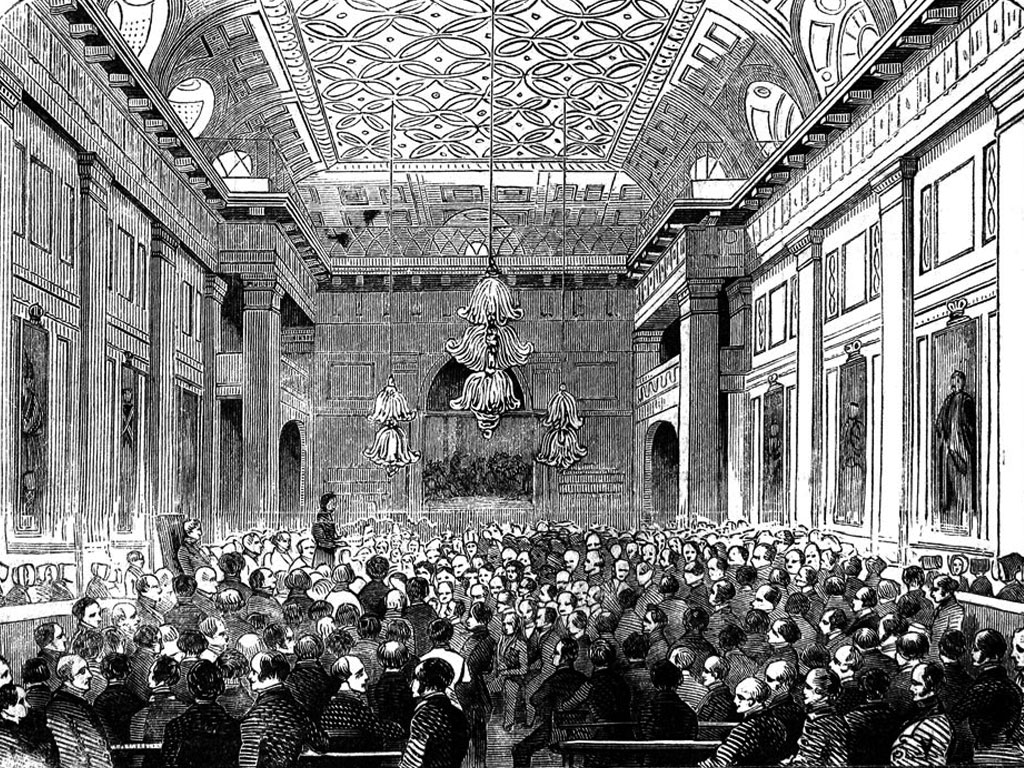 The World’s First Anti-Slavery Convention gathers in London’s Exeter Hall
The World’s First Anti-Slavery Convention gathers in London’s Exeter Hall
1840 | First World Anti-Slavery Convention
In 1840, the World’s First Anti-Slavery Convention gathers in London’s Exeter Hall. More than 500 delegates from both sides of the Atlantic answer the call for participation. Among those are delegate Lucretia Mott and Elisabeth Cady Stanton from the United States. After being denied active participation on the convention floor on account of their sex, they conceive of holding a women’s rights convention upon their return to America. READ MORE +
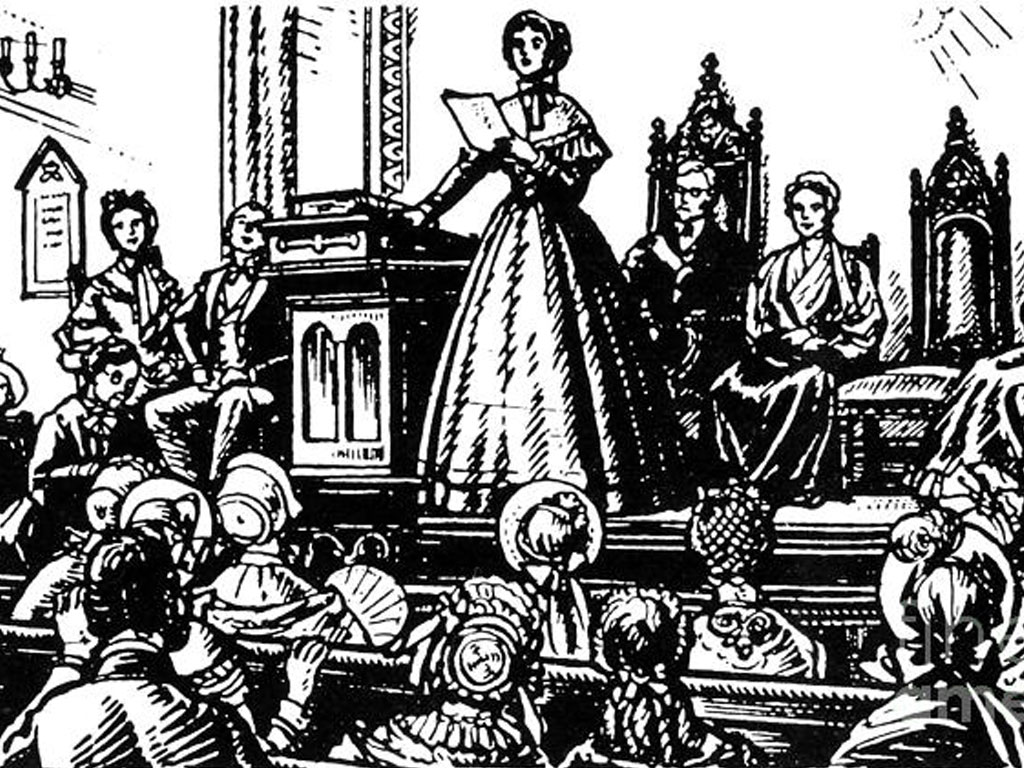 The first convention in Seneca Falls, NY
The first convention in Seneca Falls, NY
1848 | First Women's Rights Convention in Seneca Falls, NY
Abolitionists Elizabeth Cady Stanton and Lucretia Mott are leading organizers of the unprecedented convention to "discuss the social, civil and religious condition and rights of Woman." For her first public speaking engagement, Elizabeth Cady Stanton reads and opens for debate her revolutionary Declaration of Sentiments and Resolutions. Modeled after the Declaration of Independence, it states that "all men and women are created equal" and calls for woman's suffrage. A motion to sign the declaration is put to a vote and adopted. This marks effectively the beginning of the suffrage movement.
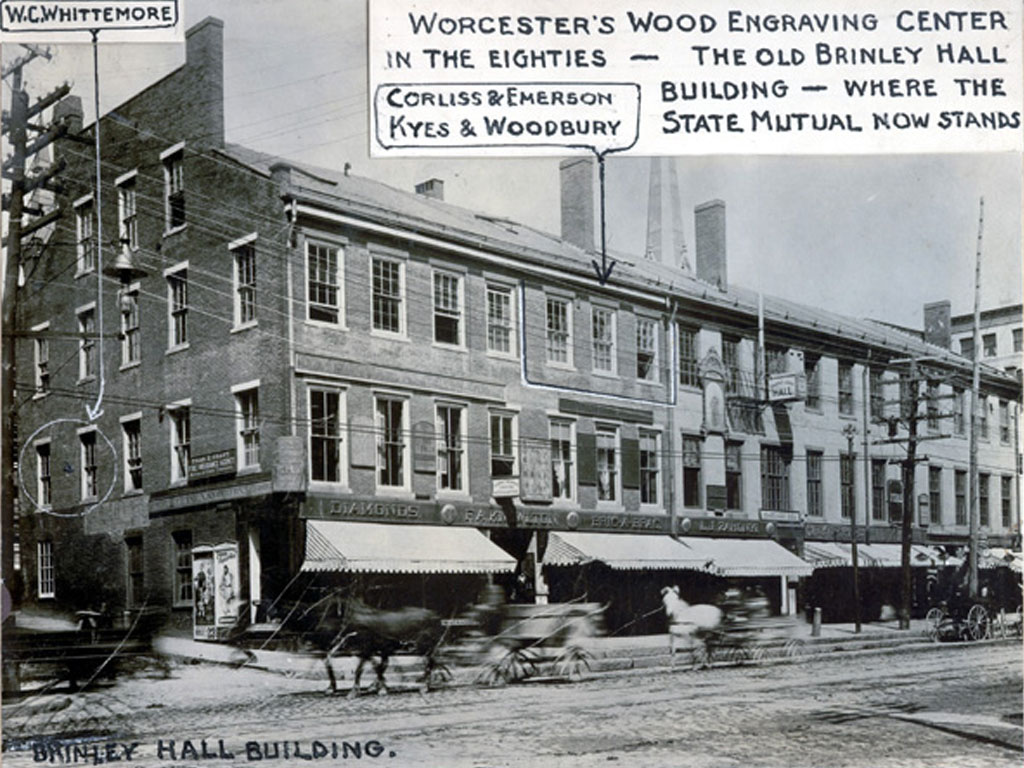 The old Brinley Hall Building, site of the first National Women's Rights Convention
The old Brinley Hall Building, site of the first National Women's Rights Convention
1850 | The first National Women's Rights Convention takes place in Worcester, MA
The convention of 1848 paved the way for an organized women's right movement. The first National Woman's Rights Convention, widely attended, brings together abolitionists and women's rights advocates, progressive women and men, who call for political, social and legal equality.
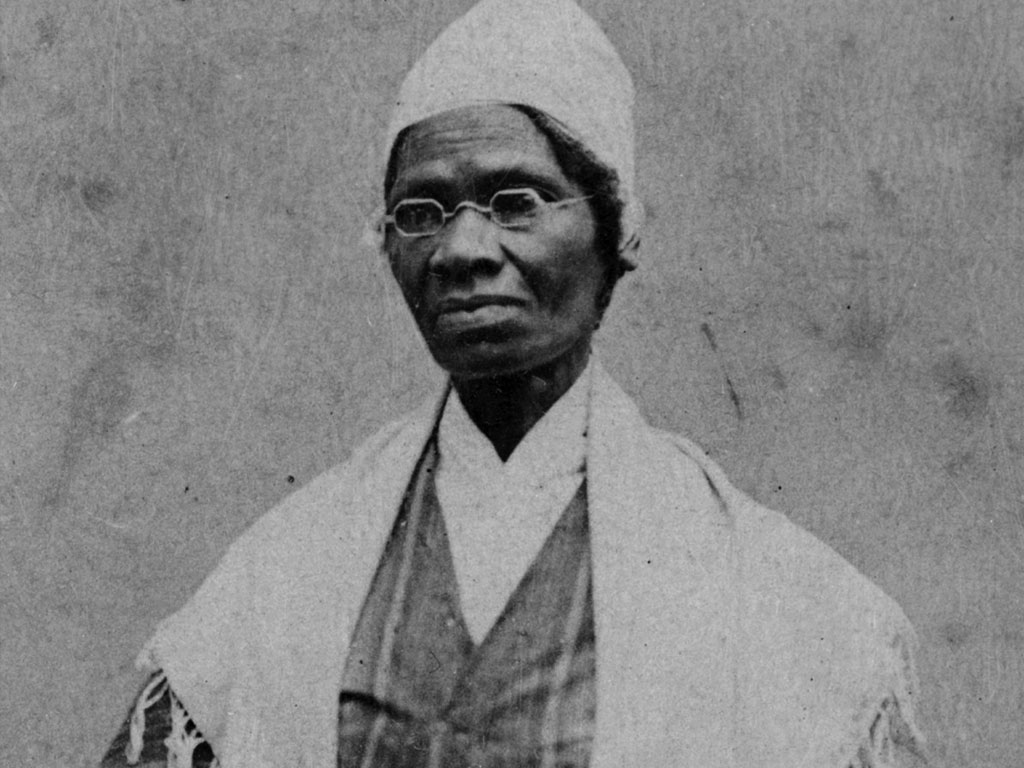 Sojourner Truth
Sojourner Truth
'51–'61 | Women's Rights Conventions Held Across the Nation
For the next ten years, National Women's Rights Conventions are held. In 1851, at a women's rights convention in Akron, Ohio, Sojourner Truth delivers her powerful speech "Ain't I a Woman". Reformers and suffragists suspend the conventions for the duration of the Civil War but continue to oppose slavery.
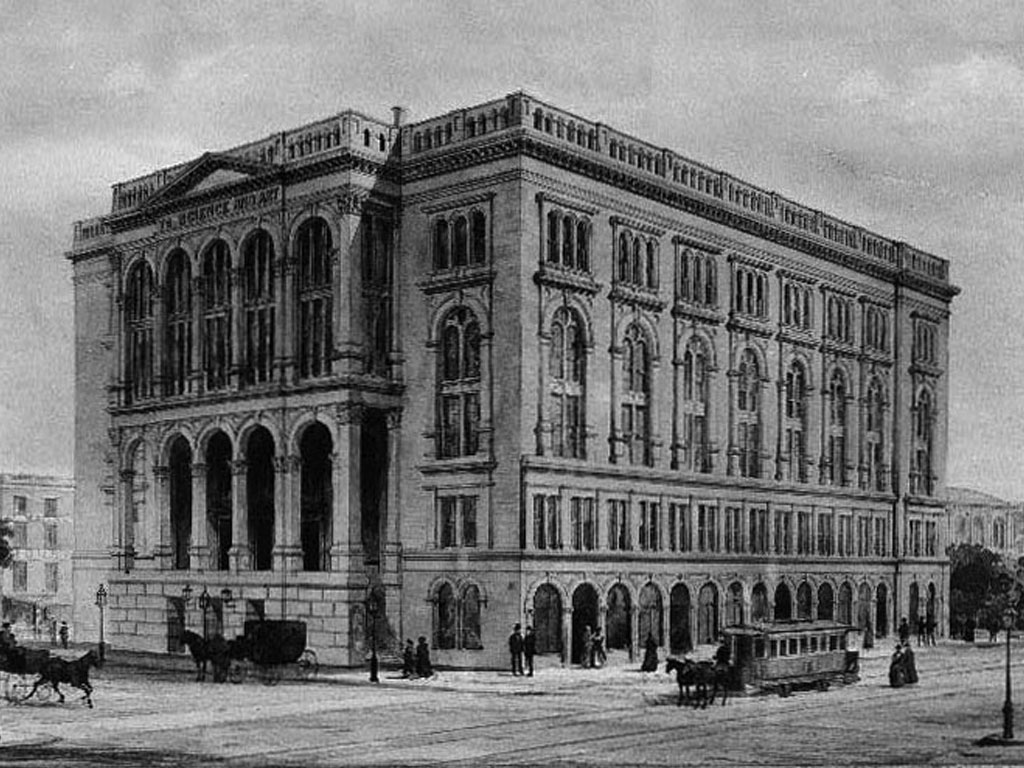 Cooper Union in New York City
Cooper Union in New York City
1863 | The Woman's Loyal National League is established in the Cooper Union in New York City
After publication of their appeal "To the Women of the Republic", Elizabeth Cady Stanton and Susan B. Anthony create the first national women's political organization, the Woman's Loyal National League. They effectively campaign for the Thirteenth Amendment to the Constitution to abolish slavery by petitioning nearly 400,000 signatures. Members include abolitionists Lucy Stone and Angelina Grimké Weld.
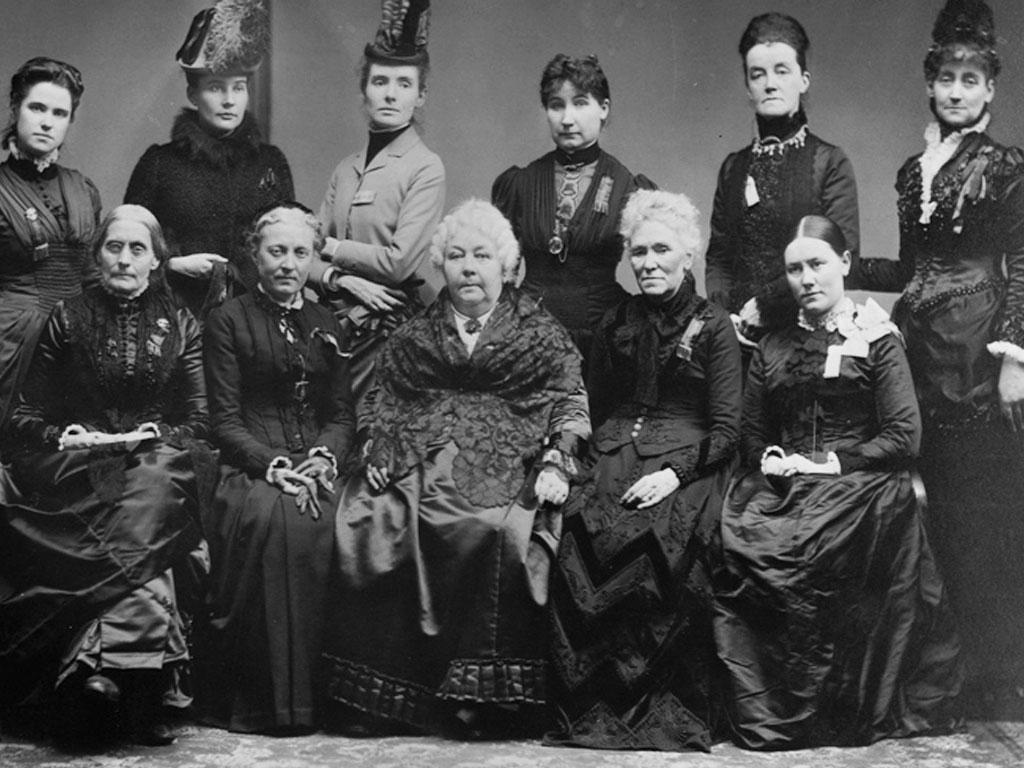 Members of the American Equal Rights Association
Members of the American Equal Rights Association
1866 | Founding of the American Equal Rights Association
Following the abolition of slavery, Elizabeth Cady Stanton and Susan B. Anthony form the AERA. Black and White abolitionists and suffragists, including Lucretia Mott, Frances Harper, Sojourner Truth, Lucy Stone and Frederick Douglass, join together to campaign for universal rights and suffrage for all, regardless of gender or race.
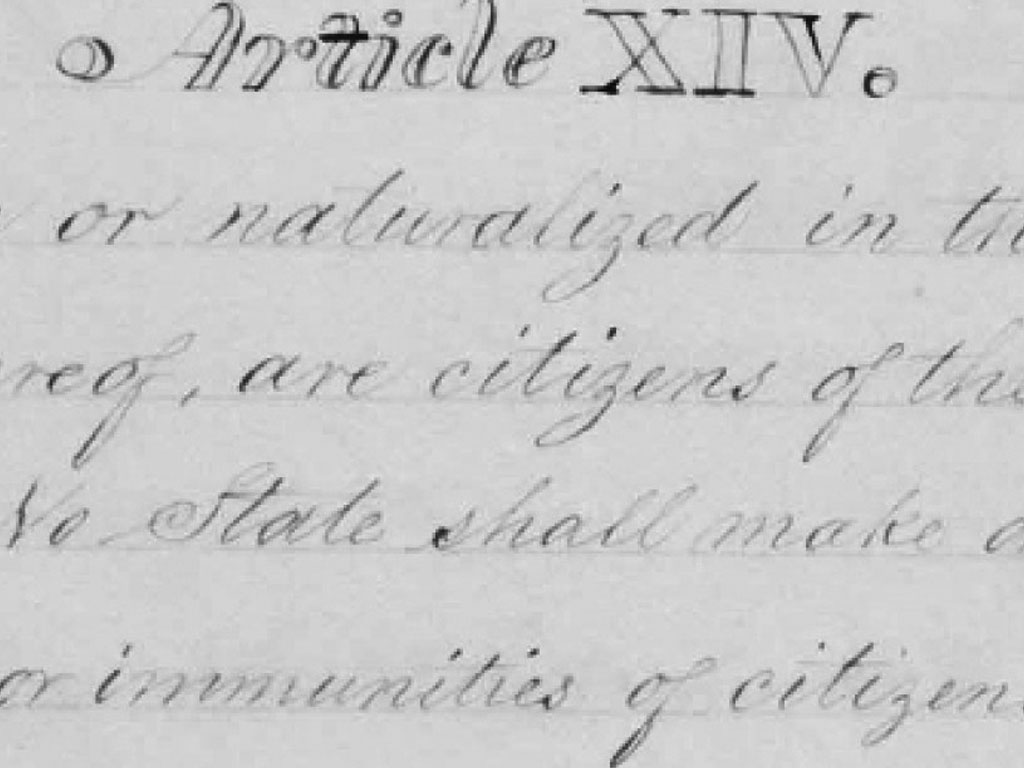 Detail of the 14th Amendment
Detail of the 14th Amendment
1868 | Ratification of the 14th Amendment to the Constitution
In which it states that all individuals born or naturalized in the United States are citizens of the United States and of the State where they live. Those said individuals are also guaranteed the right to due process, life, liberty, and property.
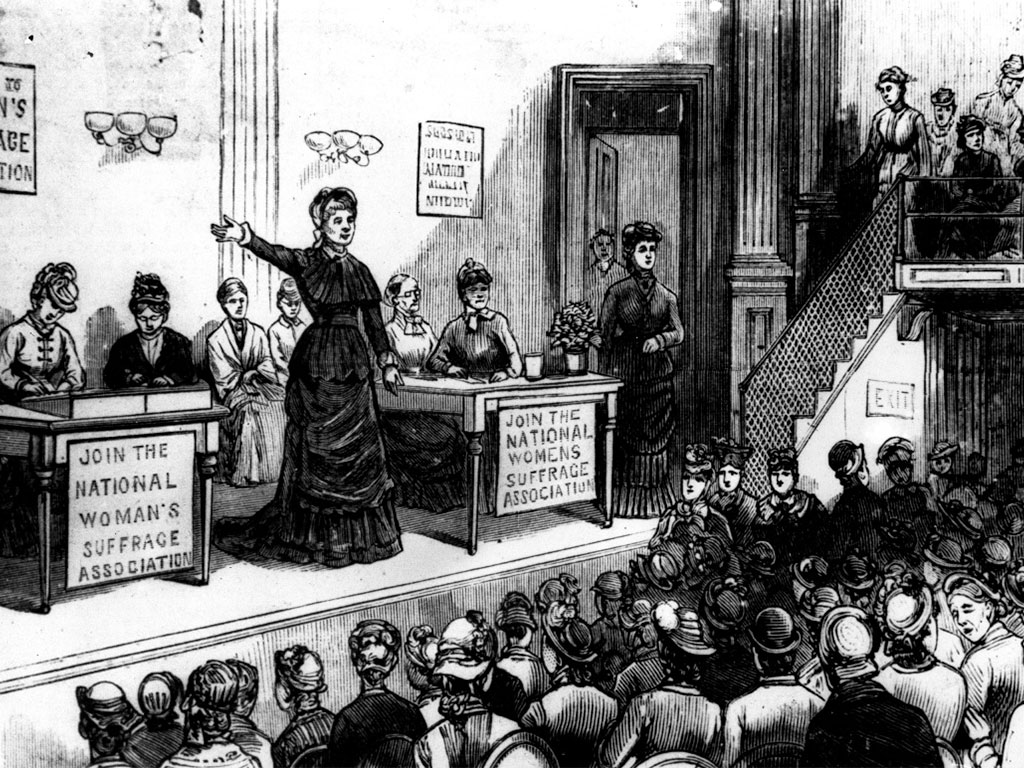 The American Woman Suffrage Association
The American Woman Suffrage Association
1869 | Split among the Suffragist Movement over the 15th Amendment
Split among the Suffragist Movement over the 15th Amendment proposing to grant rights and the vote to newly emancipated slaves under the 13th Amendment. The American Woman Suffrage Association (AWSA), led by Lucy Stone, supports the 15th Amendment. The National Woman Suffrage Association (NWSA), led by Elizabeth Cady Stanton and Susan B. Anthony, rejects the Amendment as it denies their rights and the vote to women.
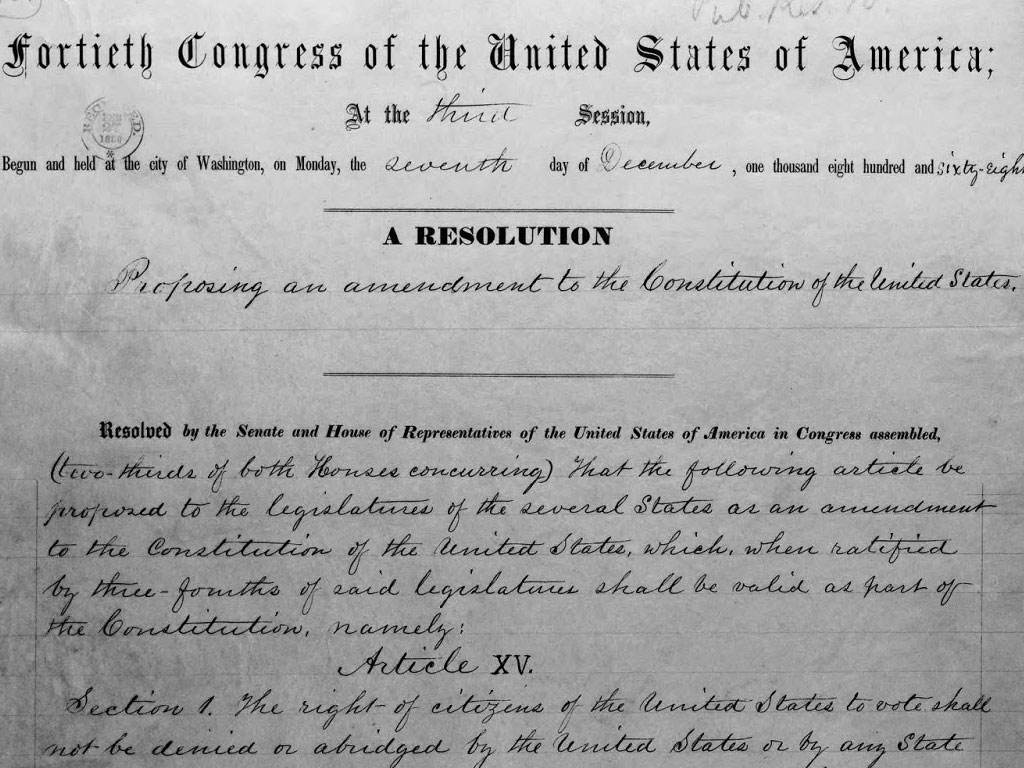 Detail of the 15th Amendment
Detail of the 15th Amendment
1870 | Congress ratifies the 15th Amendment
The 15th Amendment grants suffrage to African American men.
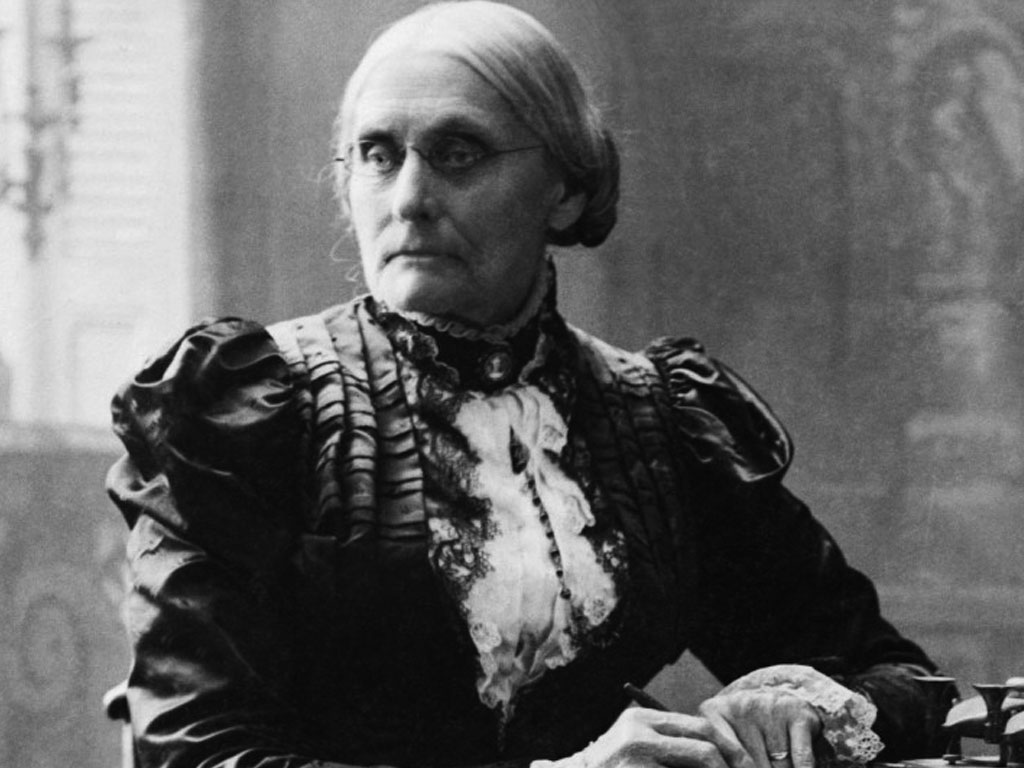 Photograph of Susan B. Anthony
Photograph of Susan B. Anthony
1872 | Susan B. Anthony Arrested for Casting a Vote
Susan B. Anthony is arrested for casting a vote in the presidential election of Ulysses S. Grant in an act of political defiance. She argues that the 14th Amendment implicitly gives her the right.
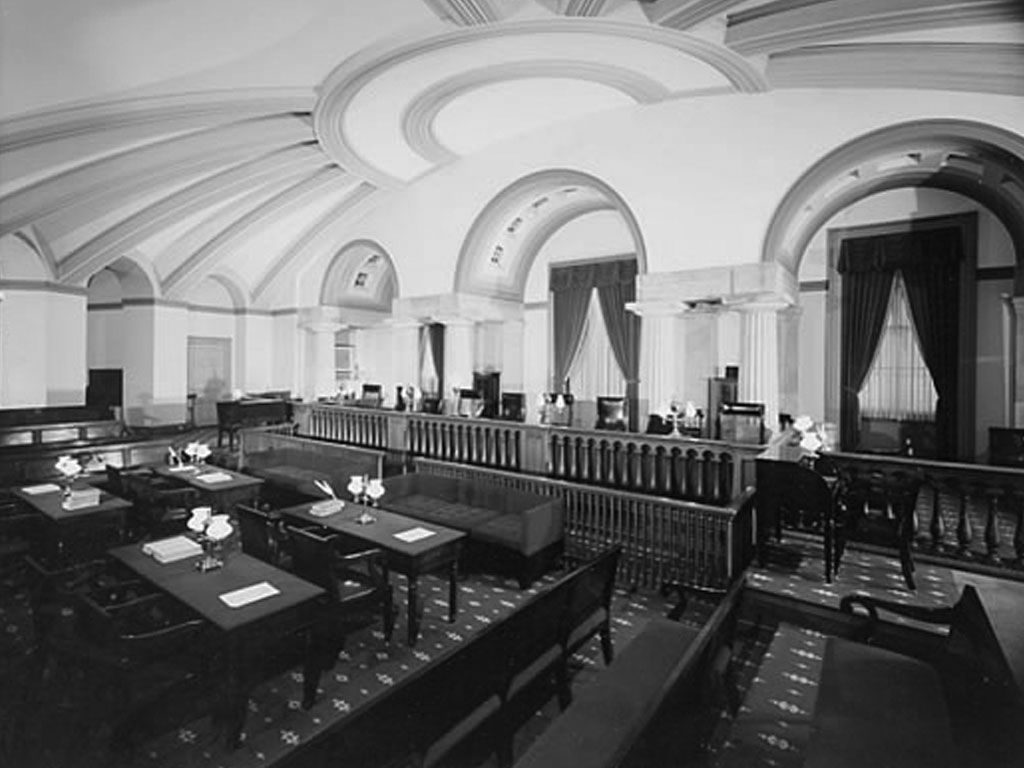 The Old Supreme Court Chamber
The Old Supreme Court Chamber
1874 | Supreme Court Rejects Argument that 14th Amendment Grants Women Right to Vote
In a legal case, Minor v. Happersett, the Supreme Court rules that the 14th amendment does not grant women the right to vote and that their rights fall under the jurisdiction of each state.
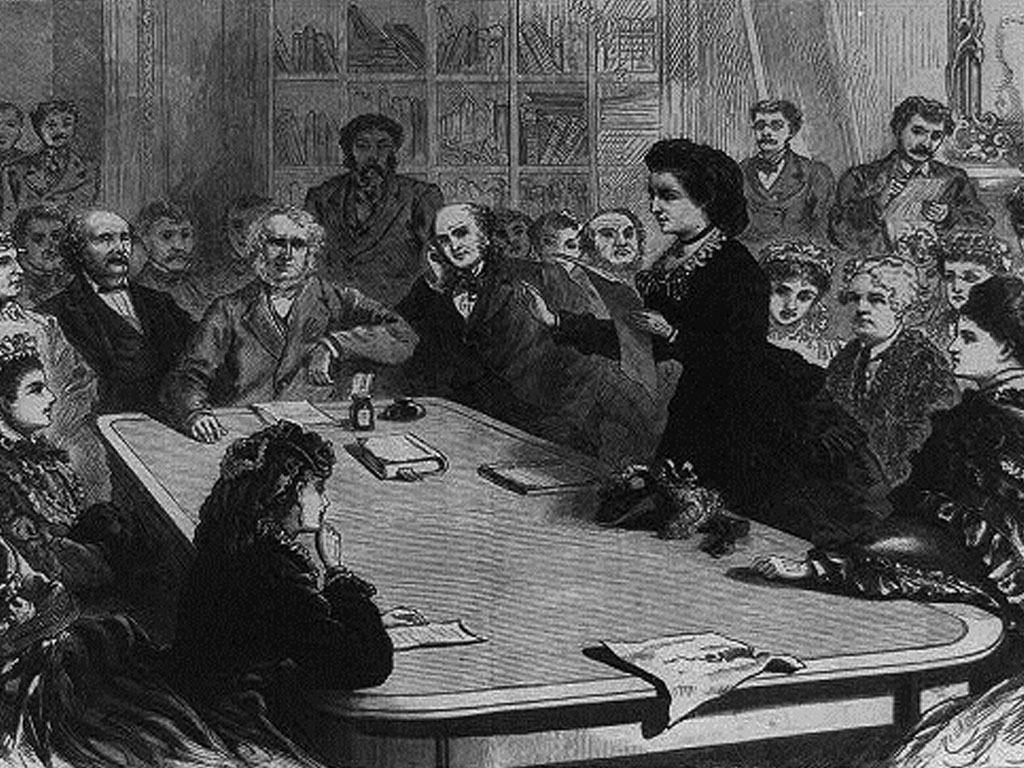 Delegate receiving suffragettes
Delegate receiving suffragettes
1878 | Woman Suffrage Amendment First Introduced in Congress
A Woman Suffrage Amendment is introduced for the first time to the United States Congress by California Senator Aaron A. Sargent.
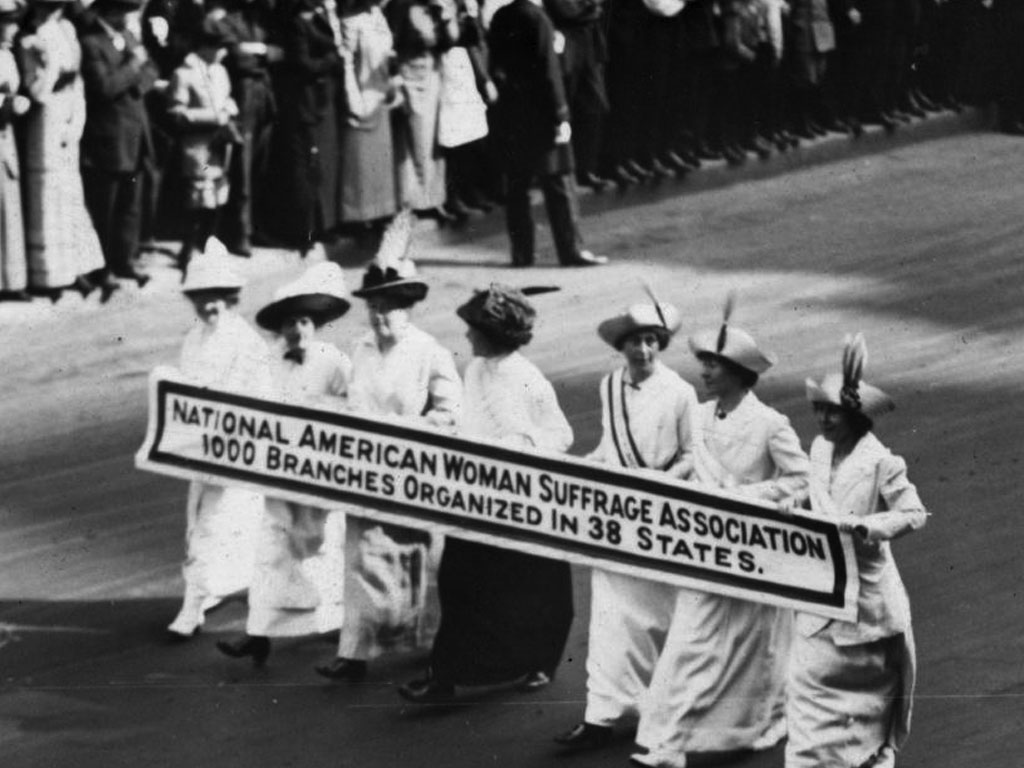 National American Woman Suffrage Association in parade
National American Woman Suffrage Association in parade
1890 | Merger between two rival organizations, AWSA and NWSA, to form NAWSA
Under the leadership of Susan B. Anthony, Alice Stone Blackwell and Elizabeth Cady Stanton, the newly formed National American Woman Suffrage Association campaigns strategically for ratification of a suffrage amendment state by state, abandoning NWSA’s strategy of pursuing a national amendment.
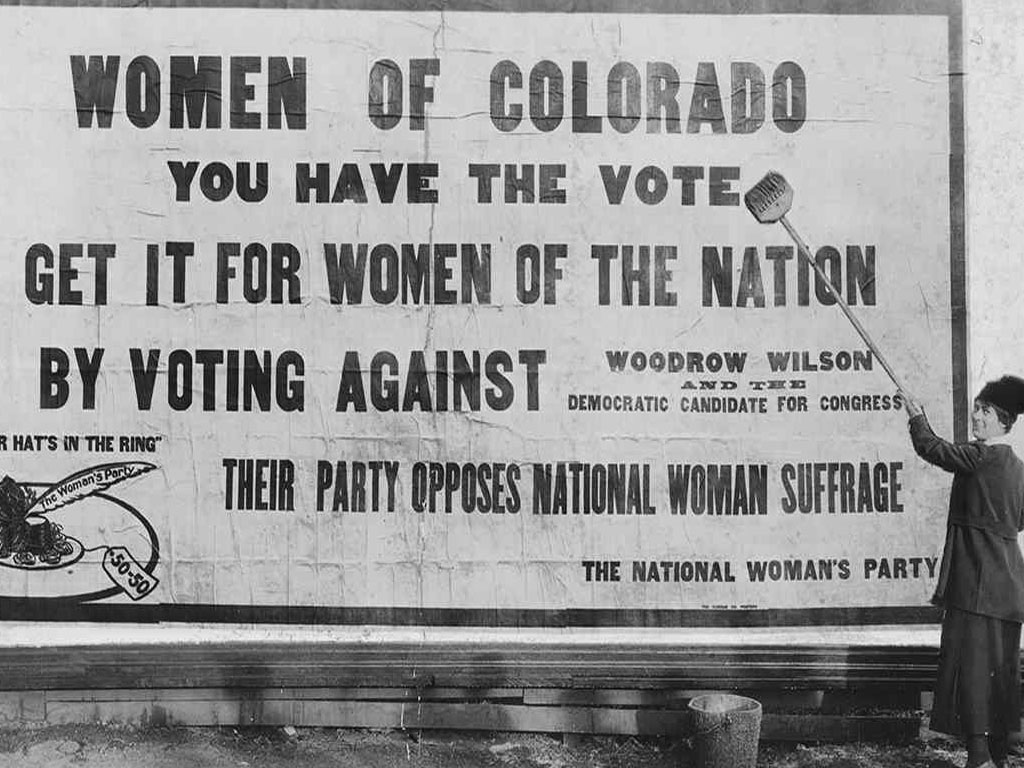 Early billboard celebrating the right to vote in Colorado
Early billboard celebrating the right to vote in Colorado
1893 | Colorado First to Give Women the Right to Vote
Colorado becomes the first state to ratify a state amendment giving women the right to vote.
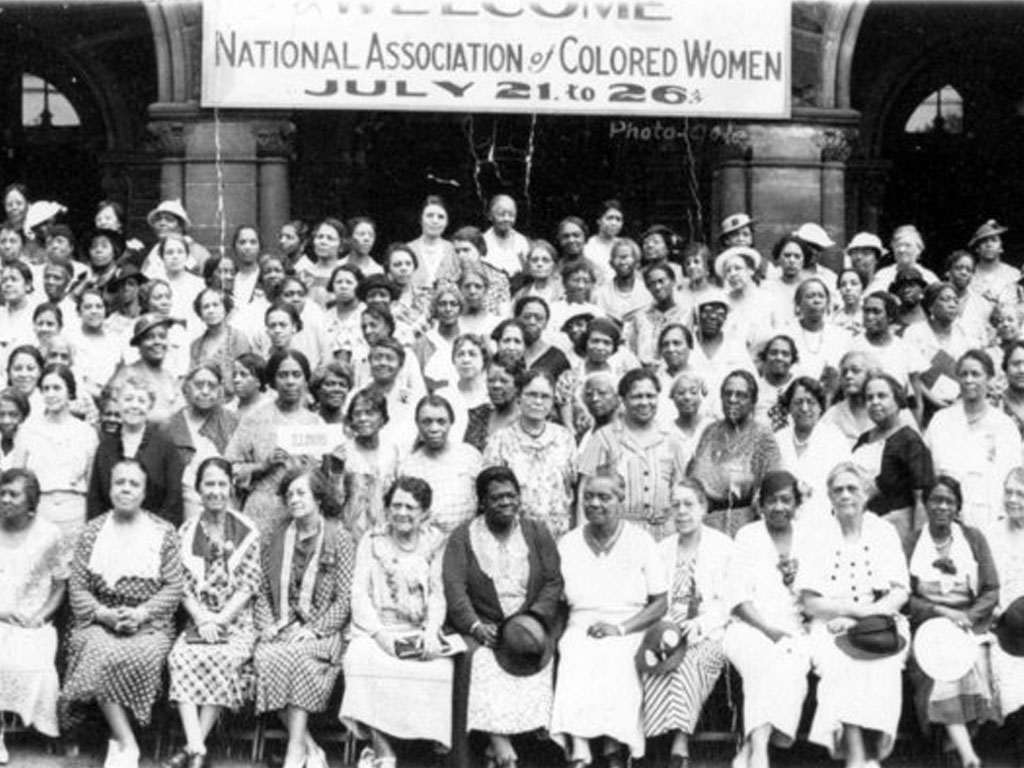 The National Association of Colored Women
The National Association of Colored Women
1896 | Foundation of the National Association of Colored Women (NACW)
Ida B. Wells Barnett, Mary Church Terrell and Harriet Tubman among other leading figures in the black women's movement gather in Washington, D.C. to form the NACW joining together more 100 women's clubs.
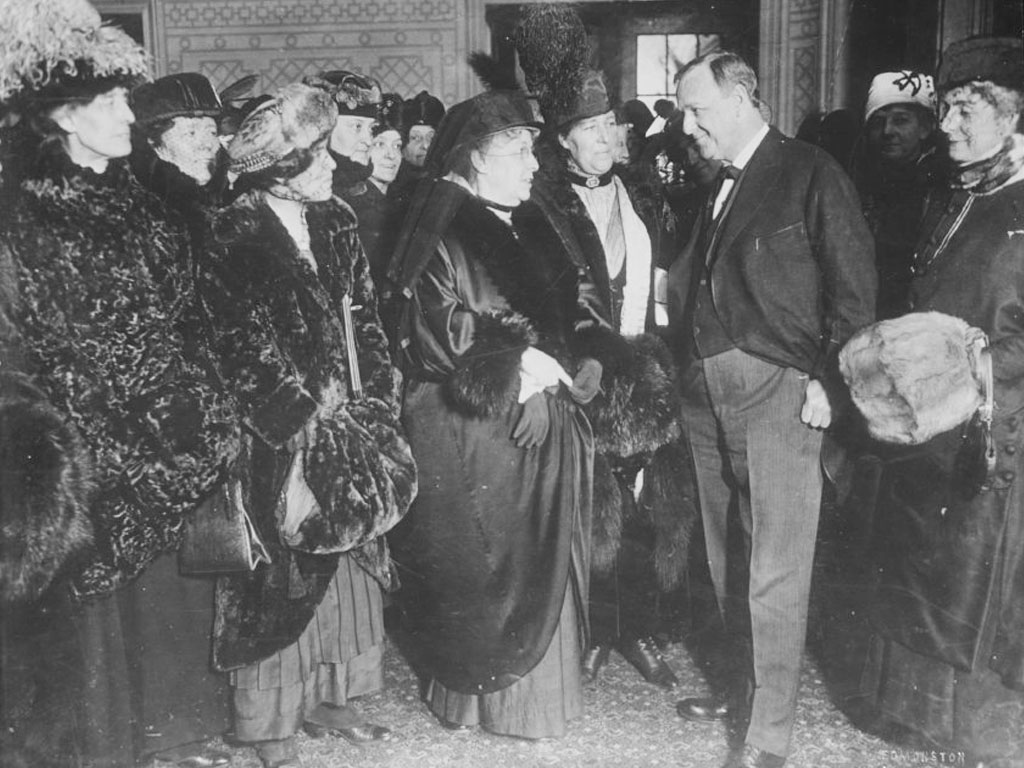 Harriot Stanton Blatch
Harriot Stanton Blatch
1907 | The Equality League for Self-Supporting Women is Formed
Founded by Harriot Stanton Blatch, daughter of Elizabeth Cady Stanton, it later becomes The Women's Political Union.
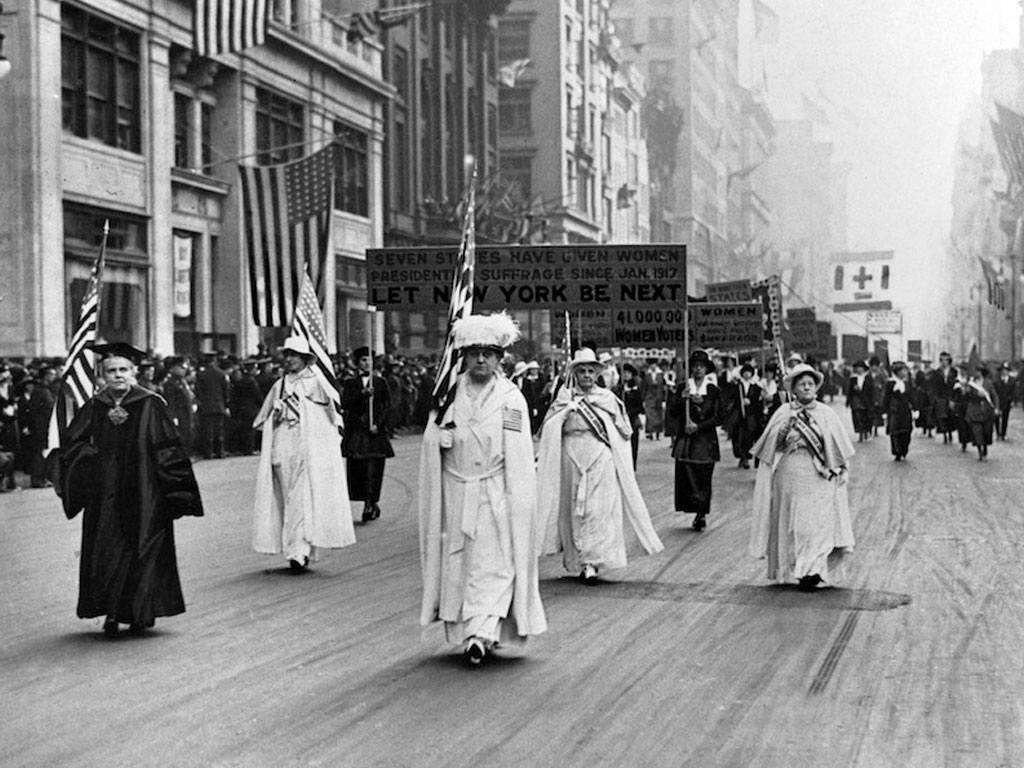 First Women's Parade in New York City
First Women's Parade in New York City
1910 | First Women's Parade in New York City
The Women's Political Union stages its first parade in New York City.
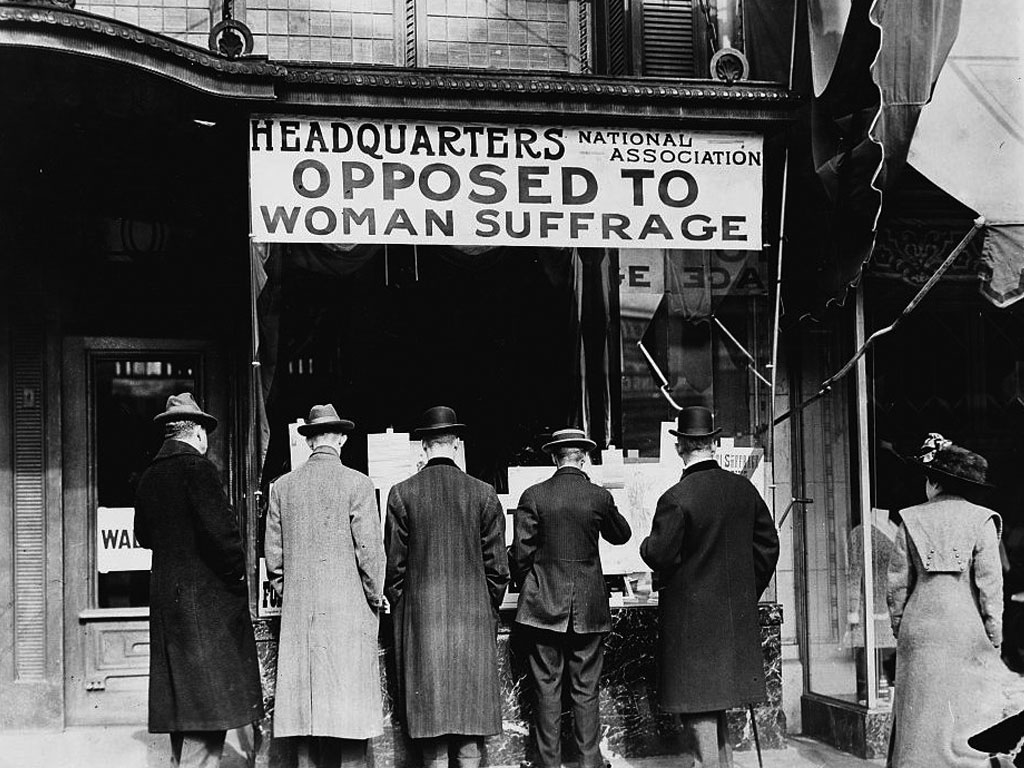 The National Association Opposed to Woman Suffrage
The National Association Opposed to Woman Suffrage
1911 | The National Association Opposed to Woman Suffrage
The anti-suffrage organization is founded and led by Josephine Dodge in New York City. It remains active well after the passage of the 19th Amendment.
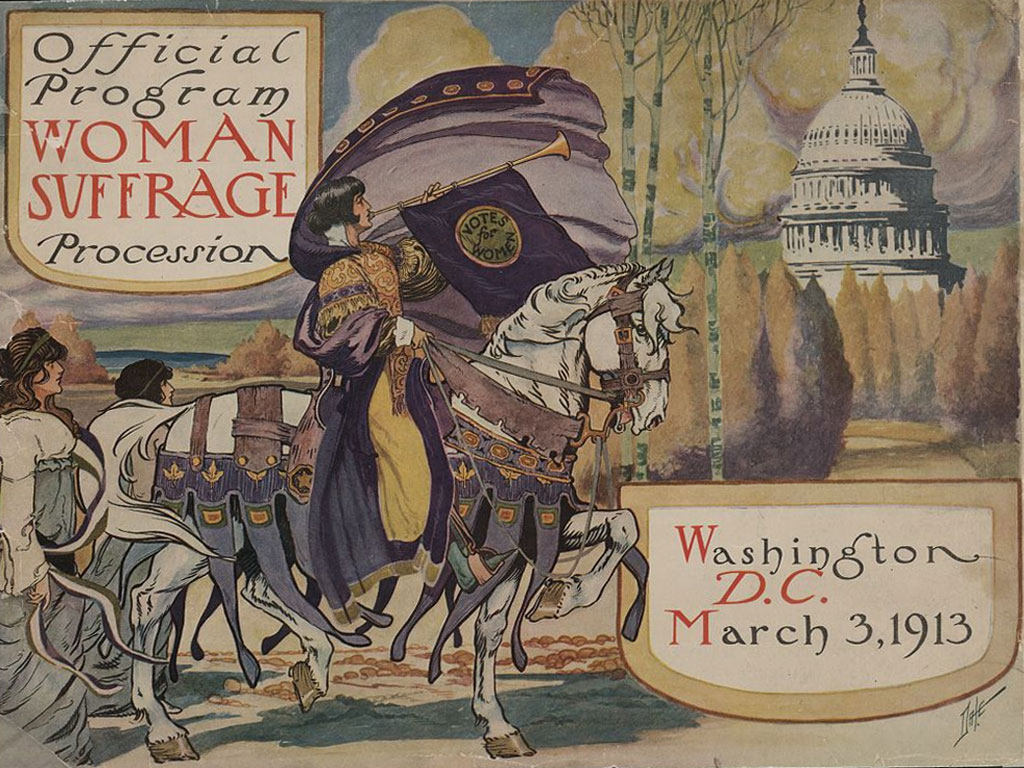 1913 program from the Woman Suffrage Procession
1913 program from the Woman Suffrage Procession
1913 | The Congressional Union for Woman Suffrage is Formed
The brainchild of Alice Paul and Lucy Burns, the Congressional Union will later be known as The National Woman's Party. Efforts of the CU are concentrated on obtaining a constitutional amendment. They strategically stage a suffrage parade in Washington, DC, on the eve of President Wilson's inauguration.
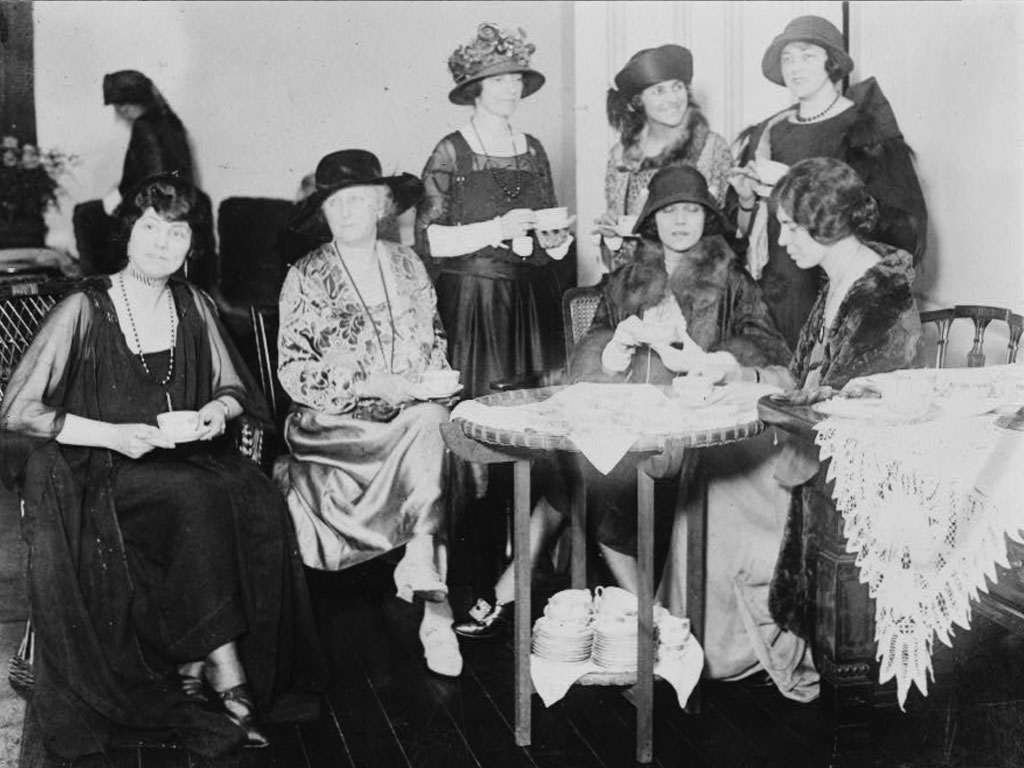 Alice Paul
Alice Paul
1916 | The Congressional Union and the Woman's Party merge into the National Woman's Party (NWP)
Alice Paul and the members of her NWP begin to use radical tactics borrowed from the suffrage movement in England, picketing the White House and practicing other forms of civil disobedience.
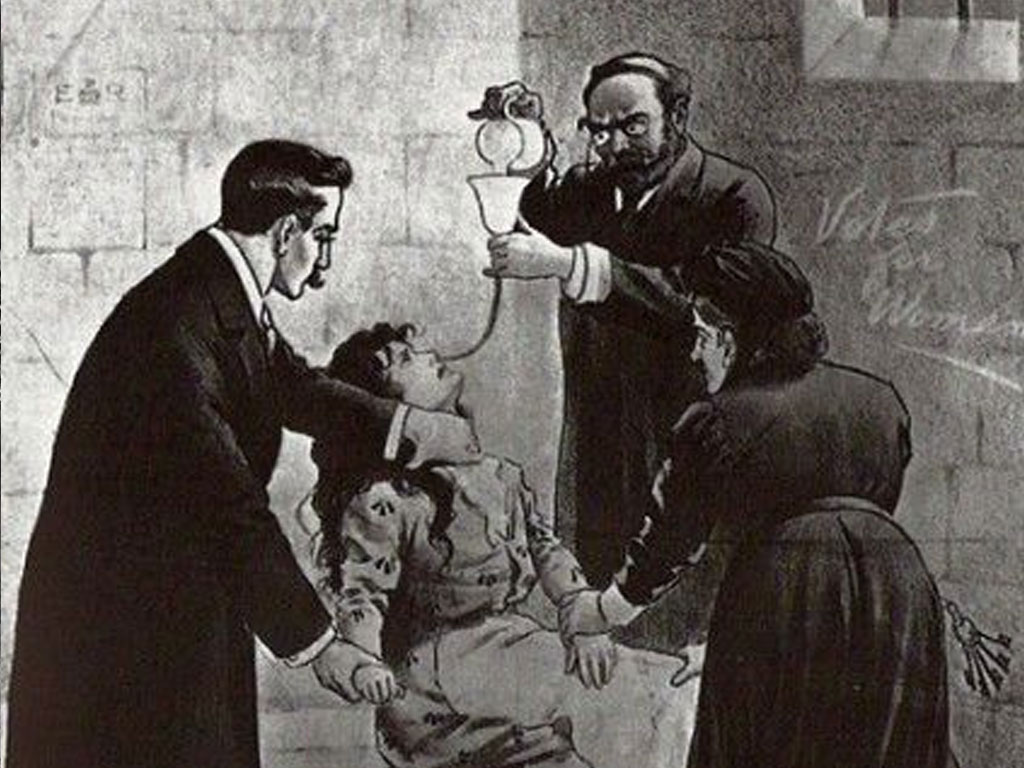 Illustration of Alice Paul being force-fed in jail
Illustration of Alice Paul being force-fed in jail
1917 | Alice Paul and Other Members of the National Woman's Party Jailed and Force-Fed
After picketing the White House, Alice Paul and other members of the National Woman's Party are arrested and jailed. In protest, they go on a hunger strike and are force-fed.
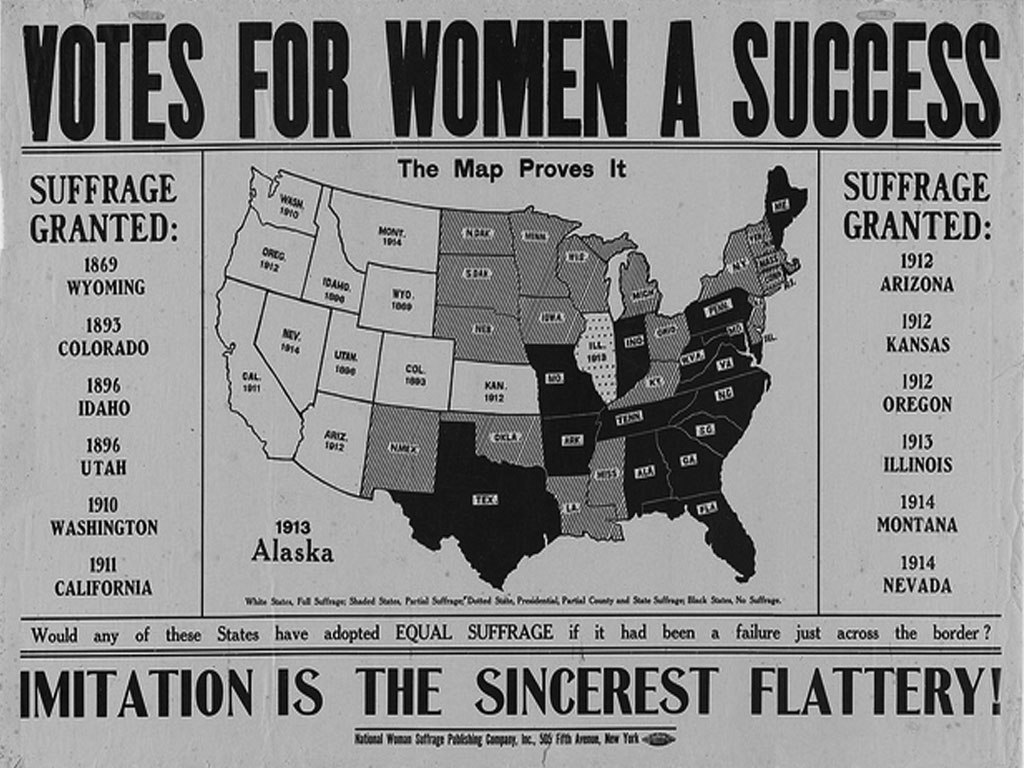 Votes for Women map
Votes for Women map
1917 | Eight States Grant Women the Right to Vote
New York, North Dakota, Indiana, Nebraska, Rhode Island, Arkansas, Michigan and Ohio.
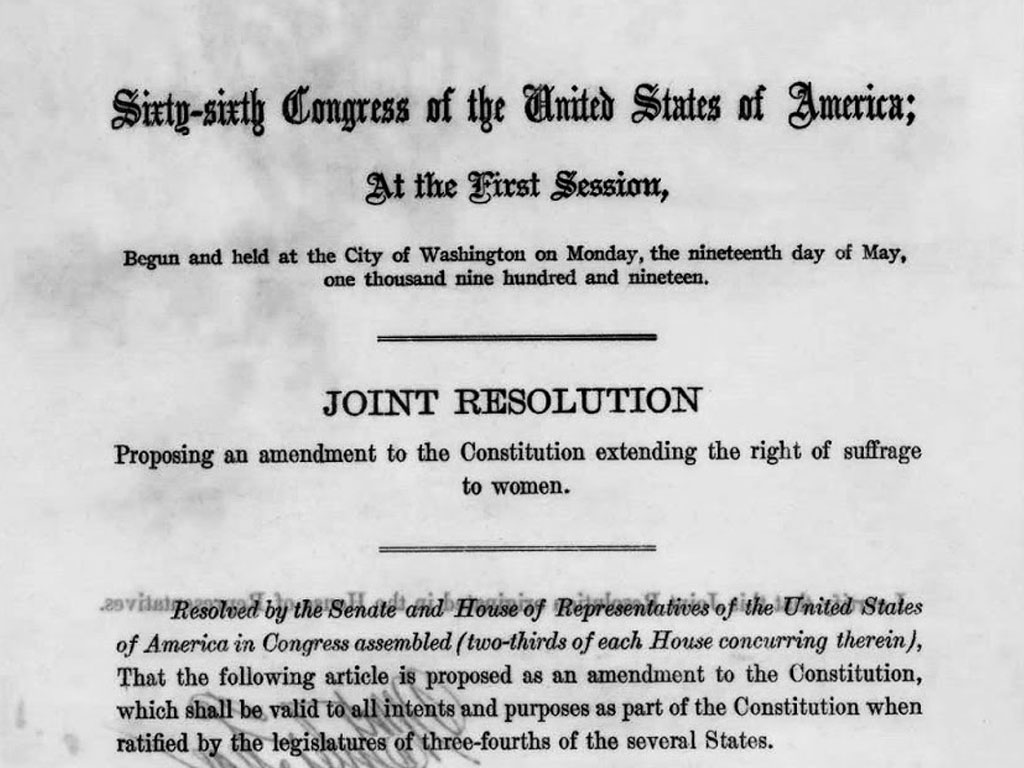 Detail of 19th Amendment
Detail of 19th Amendment
1919 | The Nineteenth Amendment to the Constitution Passes Both Houses of Congress
The Nineteenth Amendment to the Constitution, originally drafted by Susan B. Anthony, passes both houses of Congress and is sent to the states for ratification.
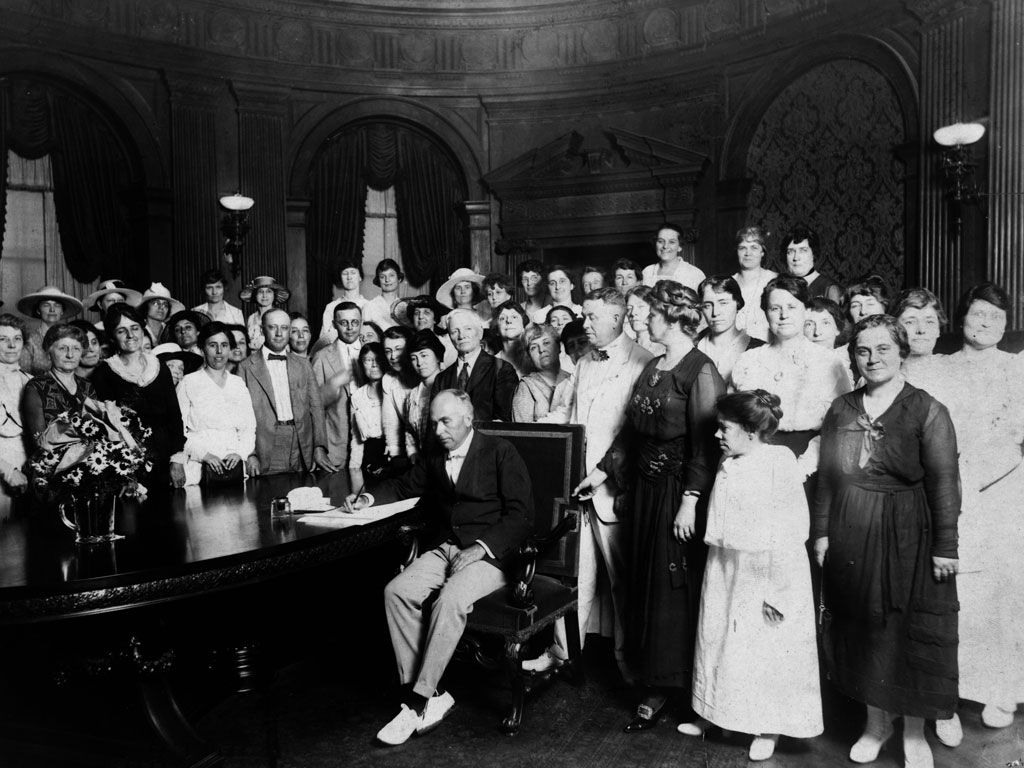 19th Amendment signed into law
19th Amendment signed into law
1920 | The Nineteenth Amendment to the Constitution Signed Into Law
The Nineteenth Amendment to the Constitution, granting women the right to vote, becomes law on August 26, 1920.
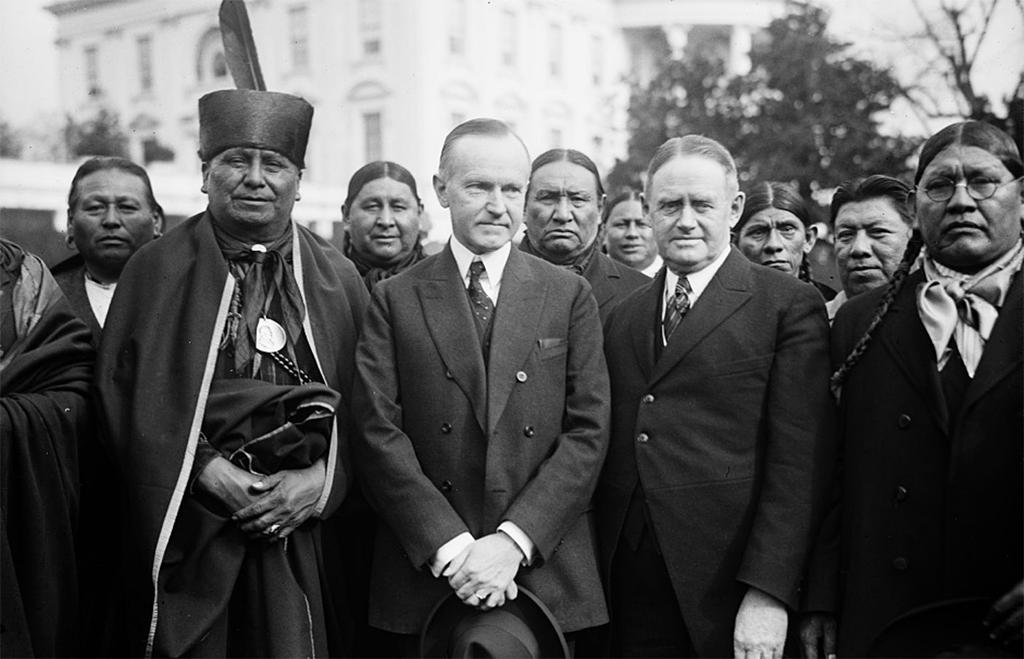 President Calvin Coolidge with tribal leaders in front of the White House, January 1924. Image courtesy Library of Congress.
President Calvin Coolidge with tribal leaders in front of the White House, January 1924. Image courtesy Library of Congress.
1924 | The Indian Citizenship Act of 1924 Grants Citizenship to Non-citizen Indians born Within U.S. Territory
The Indian Citizenship Act of 1924, also known as the Snyder Act, is signed into law on June 2, 1924 by President Calvin Coolidge, granting citizenship to non-citizen Indians born within U.S. territory.

